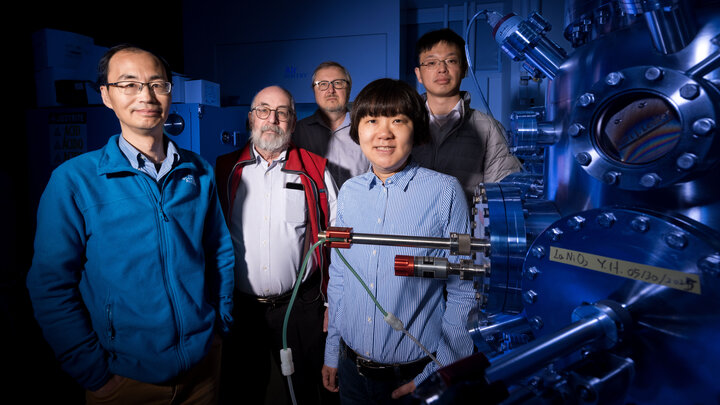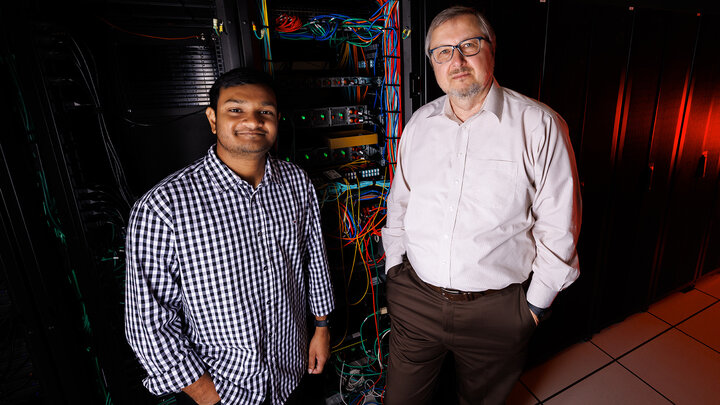Majors: Physics & Mathematics
Degree Obtained: Undergraduate
Graduation Year: 2010
Who is your employer, and where are they located?
National Institute of Standards and Technology, Gaithersburg, MD
What is your job title and what kind of work does it involve?
Physicist. I work in the Thermodynamic Metrology Group at NIST. I use atomic, molecular, and optical physics techniques in basic research projects which aim to improve metrology in the areas of temperature, pressure, time, and more. Our research promotes U.S. innovation and industrial competitiveness by advancing measurement science in these areas.
What sparked your interest in your majors?
I’ve always loved science and math. I chose my majors because I wanted to solve some challenging problems and gain a fundamental understanding of how things work.
What do you see as the value of your majors or CAS degree?
Apart from enabling my career as a physicist, my undergraduate math and physics majors are important tools for everyday problem solving. It is a philosophy of looking at problems analytically, performing cost/benefit analysis, taking in new information by applying the scientific method, and learning to determine whether choices are worthy of deep consideration or will have negligibly different outcomes
Were there any other people, activities, or events from your time at UNL that helped you get to where you are now?
The most formative events from my time at UNL were the roughly three years spent as an undergraduate researcher in Professor Timothy Gay’s group. Dr.Gay, and his excellent team of postdocs and graduate students, gave me hands-on experience doing experimental physics research which laid the foundation for my professional career. Seemingly every day of research was a new fantastic-sounding task to complete: “construct an electron gun”, “tune up the turbomolecular pump”, “build a giant electromagnet”. Of particular note during that time, I learned to manipulate the quantum state of atomic rubidium (with lasers!) and to subsequently measure the quantum state (using more lasers!). I learned a lot of other valuable experiment skills working on that project too, but I really wanted to learn about other laser technologies and what was possible when applying lasers to small quantum systems.
Tell us about the path you took to get to where you are today in your career and how you applied your education in your major(s) or area(s) of study to get here.
After getting a taste for experimental research at Nebraska, I decided that I wanted to pursue research as a career. I moved east to earn my PhD in physics from Yale University. As a grad student at Yale, I joined a project attempting to laser slow and cool molecules for the first time. For decades, laser cooling has been the workhorse of atomic physics. However, laser cooling was long thought impossible for molecules because their more complex internal structure requires an untenable number of cooling lasers. Early in my PhD research, I was part of a team which demonstrated laser slowing of molecules for the first time. Later, as a senior PhD student, I modified a long-overlooked laser cooling scheme which worked somewhat poorly for atoms but further reduced the technical complexity of laser cooling molecules. Using these techniques, our team demonstrated the first molecule magneto-optical trap. Eventually with this trap we were able to cool the molecules to less than one thousandth of a degree above absolute zero.
The pioneering experiments from my PhD work have since spurred a burgeoning field of dozens of groups utilizing laser cooled molecules toward applications ranging from quantum computing, to ultracold chemistry, to precision tests of fundamental physics. In under a decade, molecule laser cooling has gone from a fantasy to a routine starting point for physics investigations. I then did a series of postdoctoral appointments at Yale, the University of Maryland, and the National Institute of Standards and Technology exploring applications of laser cooled atoms and molecules. The focus of my research began to coalesce around atom and molecular physics techniques for sensing and metrology. Part of the NIST mission is performing measurements with rigorous traceability to the International System of Units (SI). Because all atoms or molecules of a given species are completely identical, they are excellent systems for linking measurements to the SI: the response of the system to the observable is guaranteed by immutable quantum behavior and other fundamental physical laws calculable from first principles. Eventually, I was hired as NIST staff to conduct research into thermodynamic metrology using atomic and molecular systems.
What are your future professional goals?
My current research projects involve using either vapor cell Rydberg rubidium atoms or laser-cooled magnesium monofluoride molecules as quantum sensors of blackbody radiation. Atomic vapor cells can be made on the millimeter scale, and the aim is to realize a portable, calibration-free non-contact thermometer based on this technology. With the laser cooled molecules, we hope to perform the best primary measurement of blackbody radiation in a laboratory environment. We can then use the well-known molecular properties to calibrate a variety of instruments, ranging from cell phone cameras to Earth-facing satellites for climate and weather monitoring.
We can now realize exquisite control over quantum systems by carefully applying laser light to atoms and molecules. In the future, I want to continue to explore what is possible with these systems: quantum sensing, fundamental chemistry, and tests of fundamental symmetries of nature.




